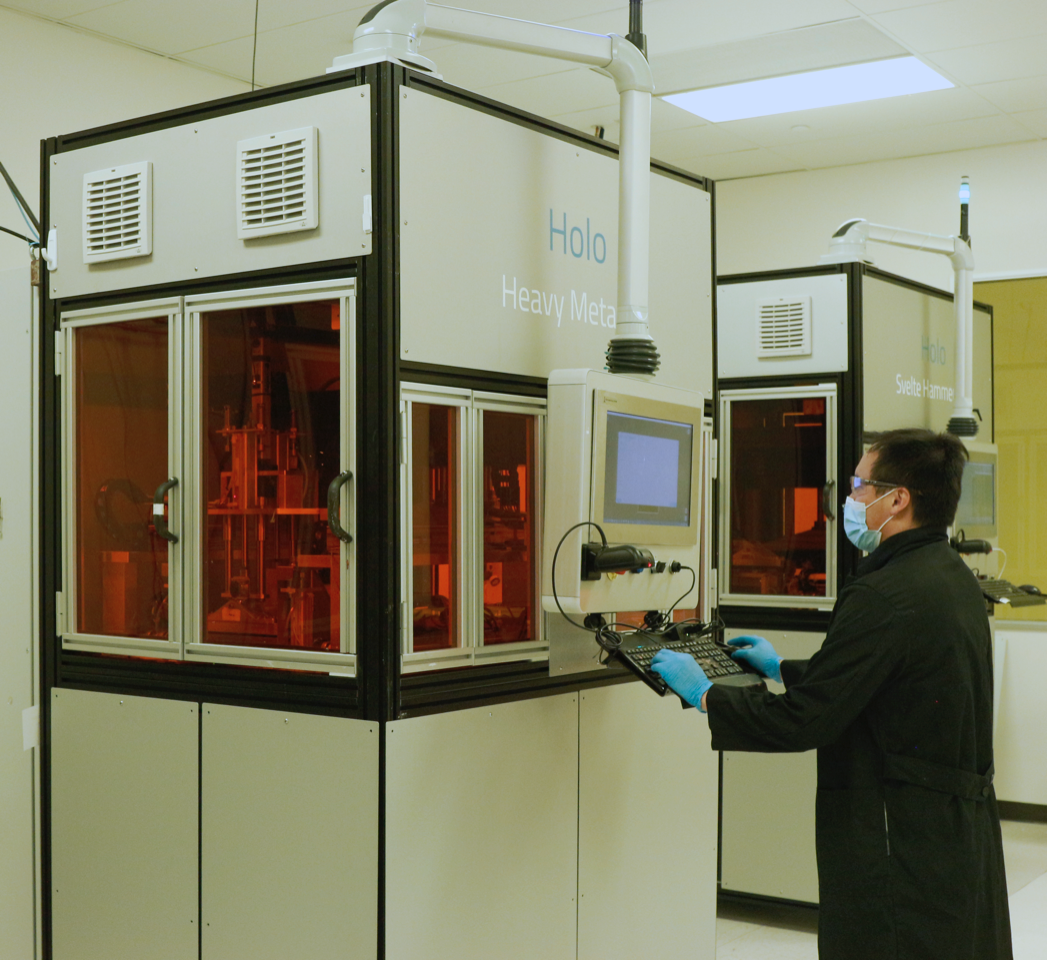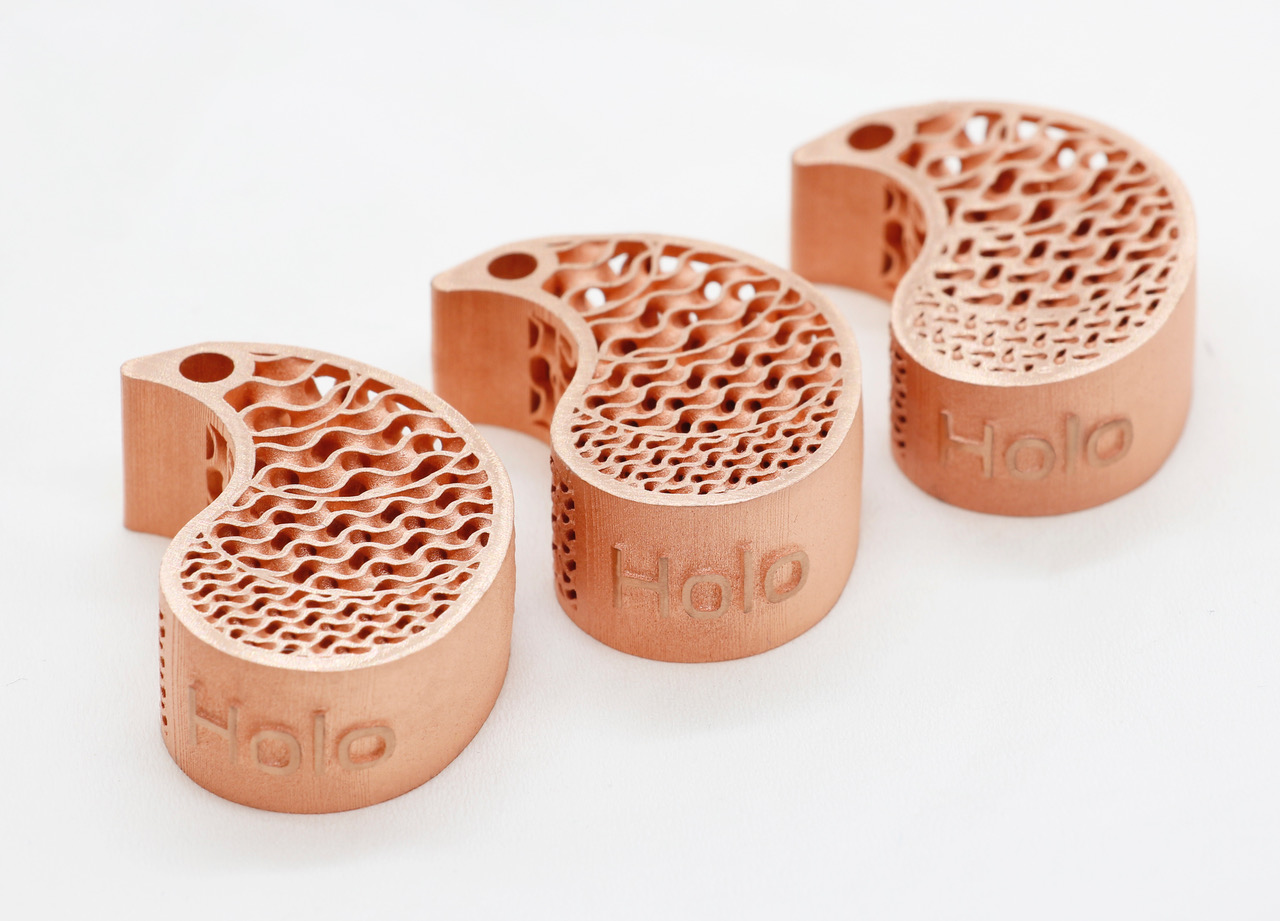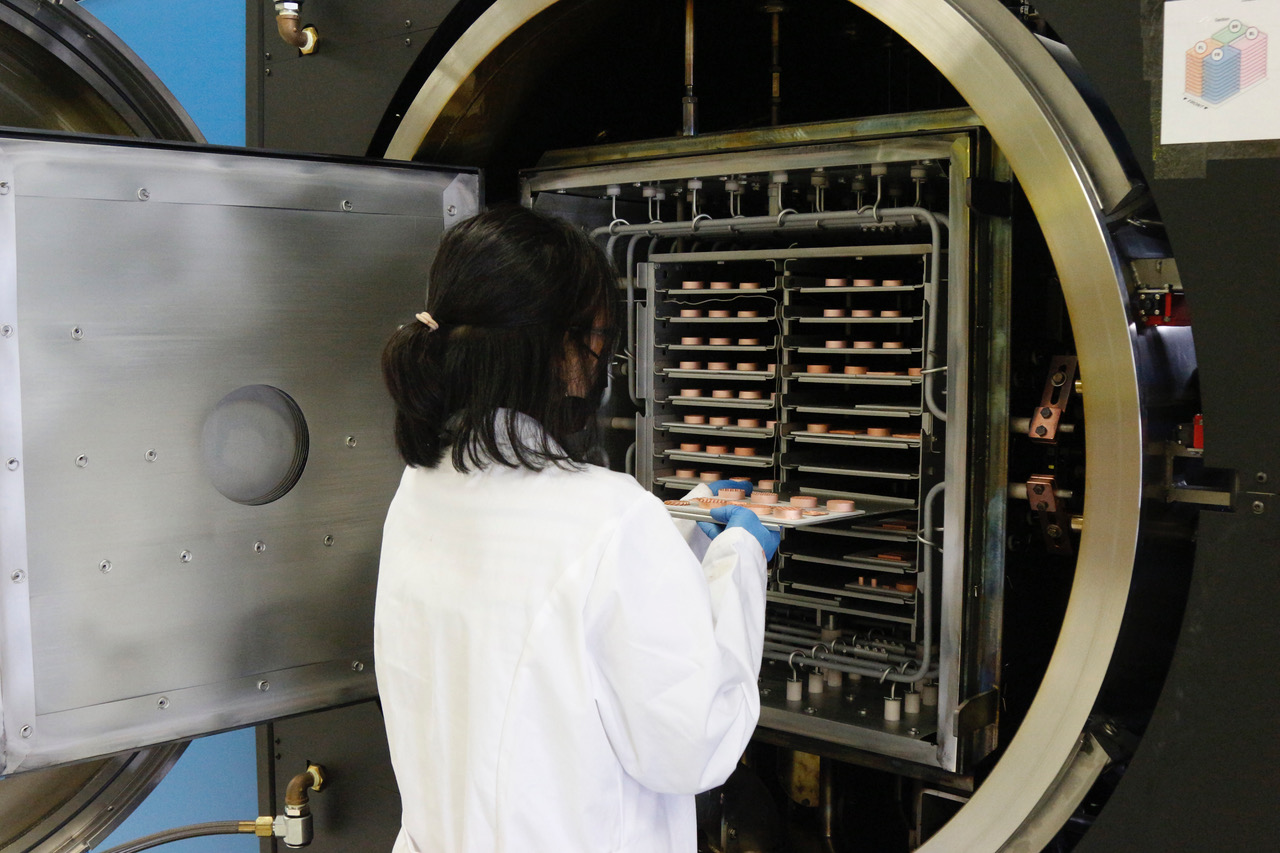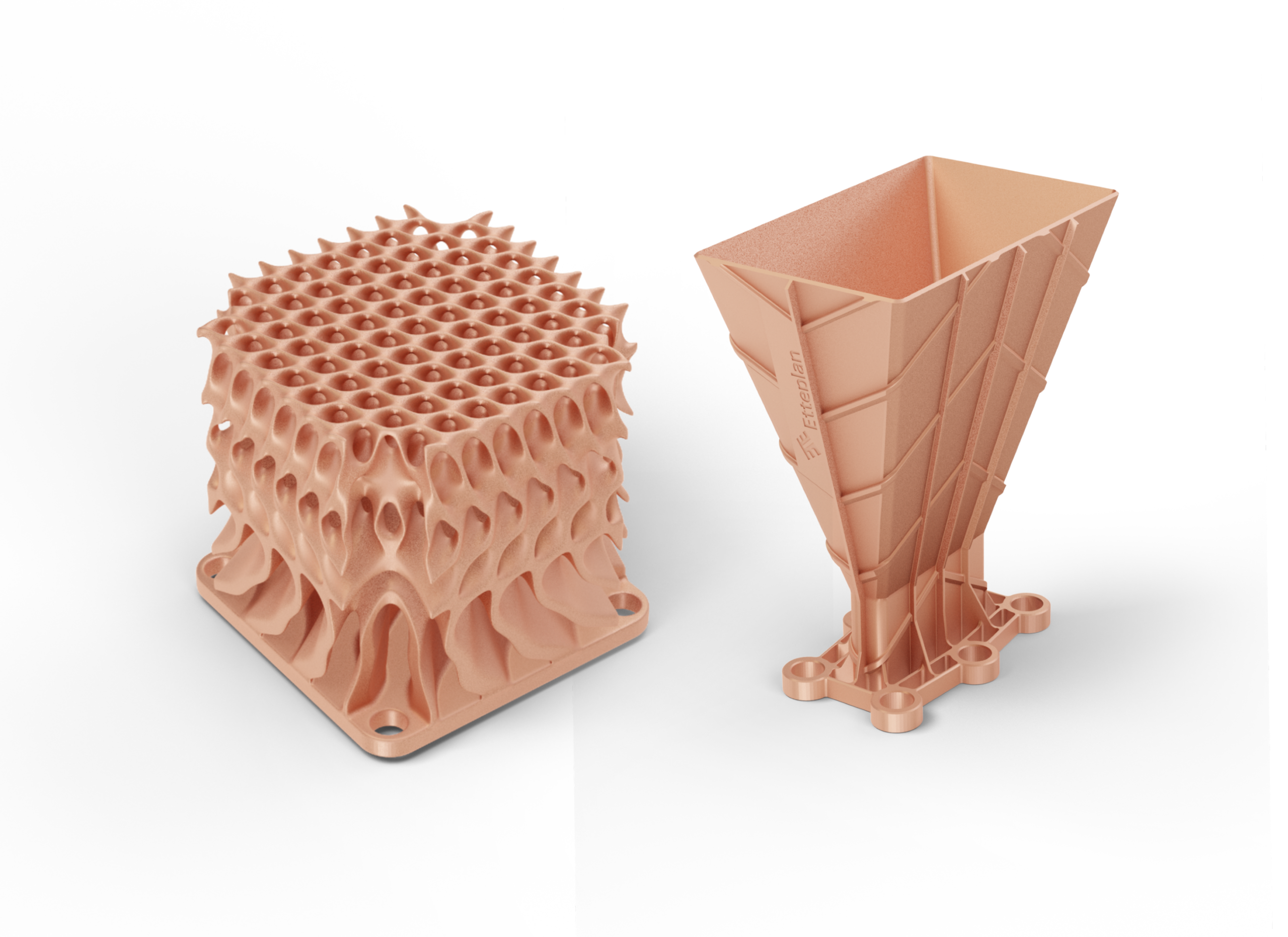Silicon Valley-based digital manufacturing company Holo has launched its proprietary PureForm additive manufacturing platform to enable high volume 3D printing for copper and other challenging materials.
3D Printing Industry caught up with Arian Aghababaie, Holo co-founder, President, and Chief Strategy Officer to learn more.
The first thing to understand about Holo is that you can’t buy the PureForm metal 3D printing system. “Our focus is to lower the barriers of adoption for customers by producing high-performance parts at production volumes – not burden them with the high CAPEX and steep learning curves associated with adopting a new manufacturing technology. By doing this, we’re able to extend metal AM into markets that haven’t traditionally had access to the technology, such as the semiconductor and high performance compute markets,” explains Aghababaie.
Using its patented technology, Holo will produce high-performance copper parts for its customers and is ramping up production to manufacture thousands of parts per month from its new production facility in the San Francisco Bay Area.
The process itself, “leverages high resolution Digital Light Processing (DLP) projector technology to expose an entire layer of our proprietary photopolymer-metal liquid slurry in one go”, explains the co-founder.
PureForm enables the production of a 99.9 percent pure copper 3D printable material that retains the metal’s bulk conductivity properties, enabling Holo to produce cooling parts for customers in the rapidly growing high-performance computer market, as well as for electric vehicles (EVs), radio frequency (RF) antennas, and heat exchangers.
“Most companies developing additive technology are focused on selling their printers,” said Hal Zarem, Holo’s CEO. “We are lowering the barriers to adoption by offering additively manufactured parts to our customers and addressing the largest sector of the AM market with finished parts.”

Holo’s PureForm technology
Holo was founded as a spin-out from 3D design software developer Autodesk in 2017, with the goal of developing proprietary 3D printing hardware and materials “from the ground up”. The company’s mission is to remove constraints to how products can be designed and built, in order to produce parts that cannot be achieved by other means.
Applying expertise in design for additive manufacturing (DfAM), Holo supplies 3D printed prototypes through to final production parts at volume to its customers, using its PureForm 3D printers which leverage the firm’s PureForm technology. The company currently holds 16 patents and has 27 patents pending for its PureForm printer design, binder materials, DfAM, and thermal designs.
The 3D printing technology is designed to enable high volume manufacturing of parts with complex geometries for a wide range of applications. PureForm leverages high-resolution optical imagers that pattern an entire plane at a time, in order to increase the speed and efficiency of the printing process.
The platform uses Holo’s patented high-definition lithography PureForm 3D printers to print a metal-polymer slurry from the company’s PureForm materials portfolio into a ‘green state’ part, containing densely-packed metal particles and polymer matrix. The polymer matrix is debound to form a ‘brown state’ part and is then sintered to produce a fully dense part.
PureForm technology is able to produce parts with features below 200µm and excels at creating intricate channels with high surface quality and fine features that optimize product performance.
“As we print with a liquid rather than a powder we’re able to achieve fine features down to 100µm, which is in production today, of both positive walls, but also intricate, enclosed channels – something that’s not possible with powder-based processes due to de-powdering,” says Aghababaie. “Our binder does not add any contaminants to the final metal part, ensuring that we have high purity and retain the bulk properties of the metal itself.”

Printing with 99.9 percent pure copper
Leveraging its PureForm platform, Holo produces high-performance pure copper parts for its customers. The company has developed a 3D printable 99.9 percent pure copper material, capable of achieving thermal and electrical conductivities comparable to those of bulk copper.
This material development has enabled the company to design and produce cooling solutions for a wide range of markets that require these mechanical properties, examples of which include high-performance computers, EVs, electrical interconnects, RF antennas, and heat exchangers.
Pure copper is Holo’s first commercially available material, and the firm is now looking to sample stainless steel to customers in order to open up further applications ranging from aerospace to medical.
In lead up to the launch of its PureForm 3D printing platform, Holo has been ramping up the production volume of its parts at its 20,000 square-foot facility in Silicon Valley. According to the company, the facility has the capacity to produce tens of thousands of parts per month.
“The challenge today with metal 3D printing is that technologies are either too expensive and unable to scale for production, or low resolution, which limit applications,” says Aghababaie. “Holo’s PureForm technology enables us to produce high-resolution components directly for our customers, at a fraction of the cost of existing AM technologies and in production volumes.”
These “production volumes” currently equate to “tens of thousands of parts per month.”

Advances in copper additive manufacturing
Copper is well known for its excellent electrical and thermal conductivity and ductility and is reportedly the third-largest materials market in the world, worth over $170 billion globally. While 3D printing copper provides manufacturers with more geometric freedom, less wastage, lower cost for short-run parts, processing the material has proved challenging to many metal methods. Some success has been seen in recent years, however.
Back in 2019, metal and polymer 3D printer manufacturer Farsoon Technologies developed a method of 3D printing pure copper to produce a functional heat exchanger, by countering the adverse effects of the metal’s reflectivity. Not long afterward, on-demand manufacturing provider Protolabs launched its own copper 3D printing service in a bid to fill a gap in the market for copper part suppliers.
In the same year, 3D printer developer Optomec hit a “major milestone” for its Laser Engineered Net Shaping (LENS) direct energy deposition (DED) 3D printing technology, after developing process parameters for the production of pure copper parts. According to the company, these parameters were able to account for differences in thermal conductivity and changes in absorption during printing. Meanwhile in 2020, US composite and metal 3D printer provider Markforged released a pure copper material option for use with its Metal X 3D printer.
Most recently, researchers from Uppsala University and graphene specialist Graphmatech took significant strides towards increasing the strength and density of 3D printed copper by adding graphene, and industrial 3D printer manufacturer Digital Metal added a new pure copper powder, DM Cu, for use with its binder jet 3D printing technology.

Subscribe to the 3D Printing Industry newsletter for the latest news in additive manufacturing. You can also stay connected by following us on Twitter and liking us on Facebook.
Looking for a career in additive manufacturing? Visit 3D Printing Jobs for a selection of roles in the industry.
Featured image shows 3D printed copper keychains using Holo’s PureForm technology. Photo via Holo.



